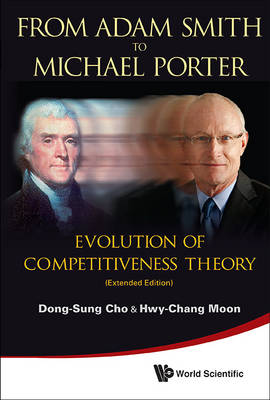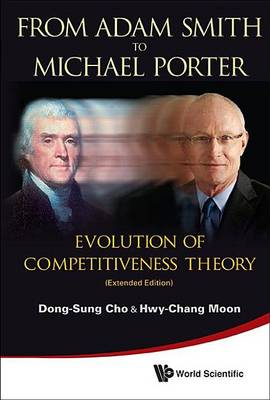Asia-pacific Business
2 primary works • 3 total works
Book 2
From Adam Smith To Michael Porter: Evolution Of Competitiveness Theory
by Dong-sung Cho and Hwy-chang Moon
Published 1 January 2000
Latest Edition: From Adam Smith to Michael Porter: Evolution of Competitiveness Theory (Extended Edition)Traditionally, a nation's international competitiveness has been explained by international trade theories originating from Adam Smith. However, today's global economy is too complicated to be explained by the traditional trade theories. Recently, Michael Porter of the Harvard Business School introduced a new competitiveness theory, the so-called diamond model. He differentiated his theory from the traditional trade theories by arguing that national prosperity is not inherited, but created by choices; in other words, national wealth is not set by factor endowments, but created by strategic choices. He showed different choices of creating wealth, which had been quite limited in the world of traditional trade theories. His diamond model has lately been extended by several scholars. This book highlights Porter's achievement by comparing it with those of traditional trade theorists and presents new developments of competitiveness theory. By discussing the “before” and “after” of Porter's theory, the authors provide the reader with a holistic picture of competitiveness theory.
Book 7
From Adam Smith To Michael Porter: Evolution Of Competitiveness Theory (Extended Edition)
by Dong-sung Cho and Hwy-chang Moon
Published 15 April 2013
With Foreword by Michael PorterFollowing the success of the First Edition published in 2000, this extended edition of From Adam Smith to Michael Porter: Evolution of Competitiveness Theory provides a thorough explanation of the evolution of international competitiveness theories and their economic and strategic implications. The theories range from classical theories such as Adam Smith's theory of absolute advantage, to new theories such as Michael Porter's diamond model. Professor Cho and Professor Moon have updated their research with their latest theoretical advancements, such as the double-diamond-based nine factor model, and MASI (Measure, Analyze, Stimulate, and Implement) model.This newly revised volume is suitable for International Economics, Business Strategy, and International Business courses on both the graduate and upper-division undergraduate levels. Policy makers and corporate managers will also find useful implications from this book's systematic integration and application of important competitiveness models.
From Adam Smith to Michael Porter
by Cho Dong-Sung, Hwy-chang Moon, and Dong-sung Cho
Published December 2001


